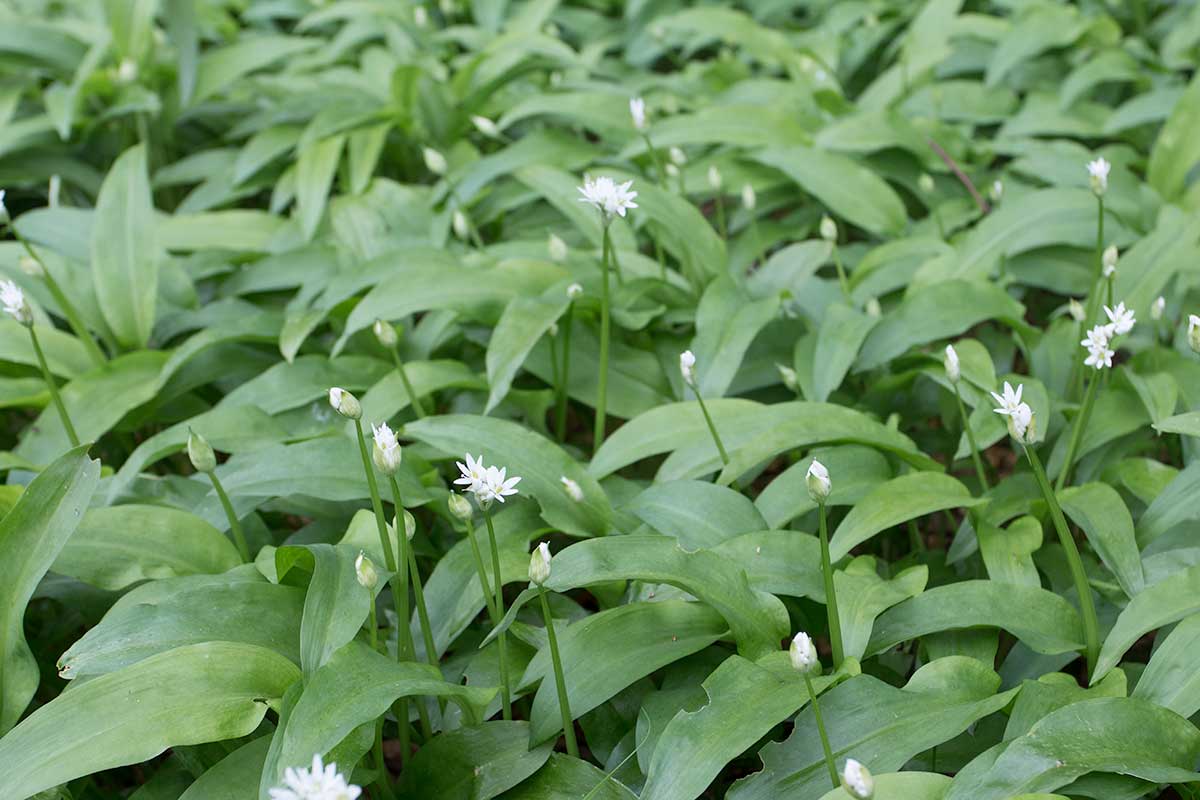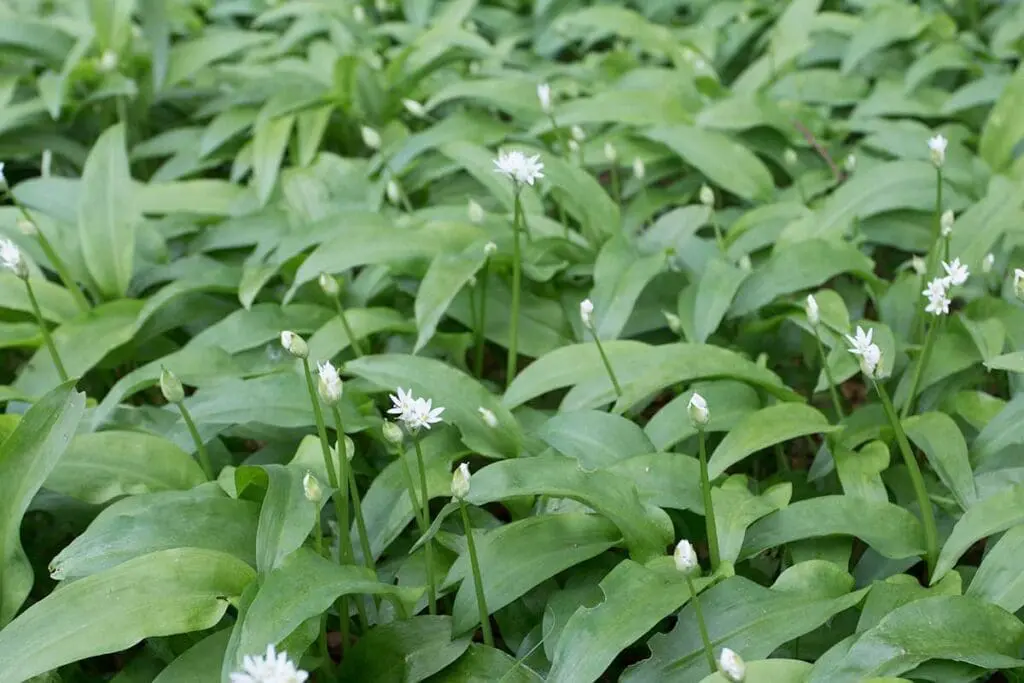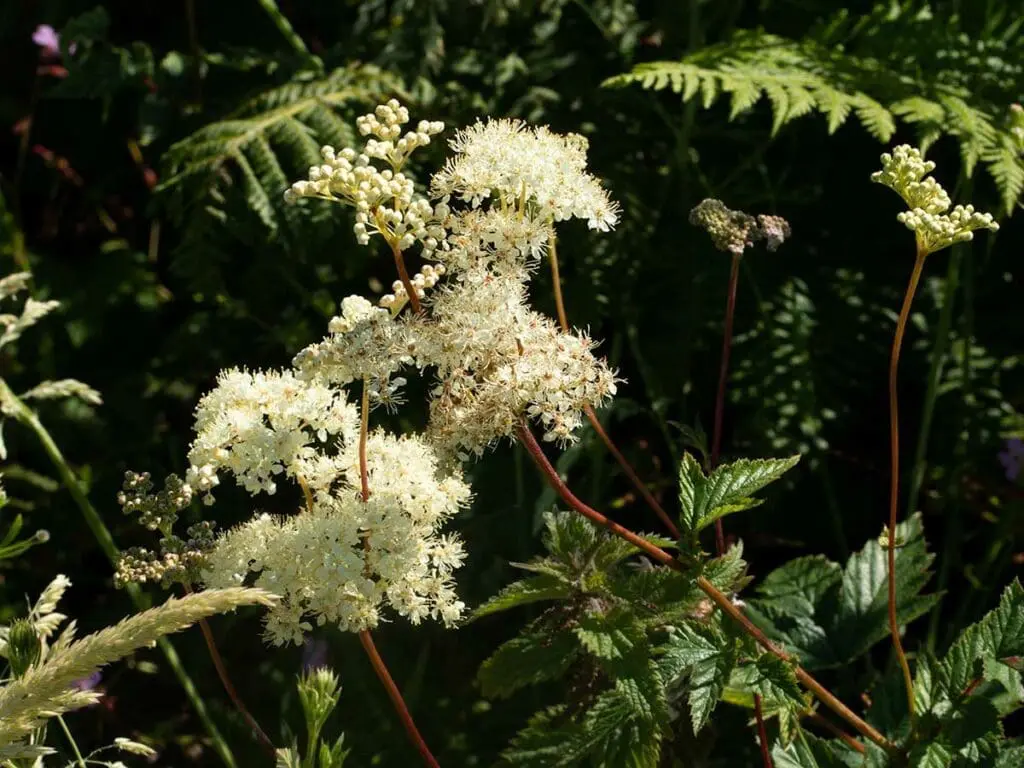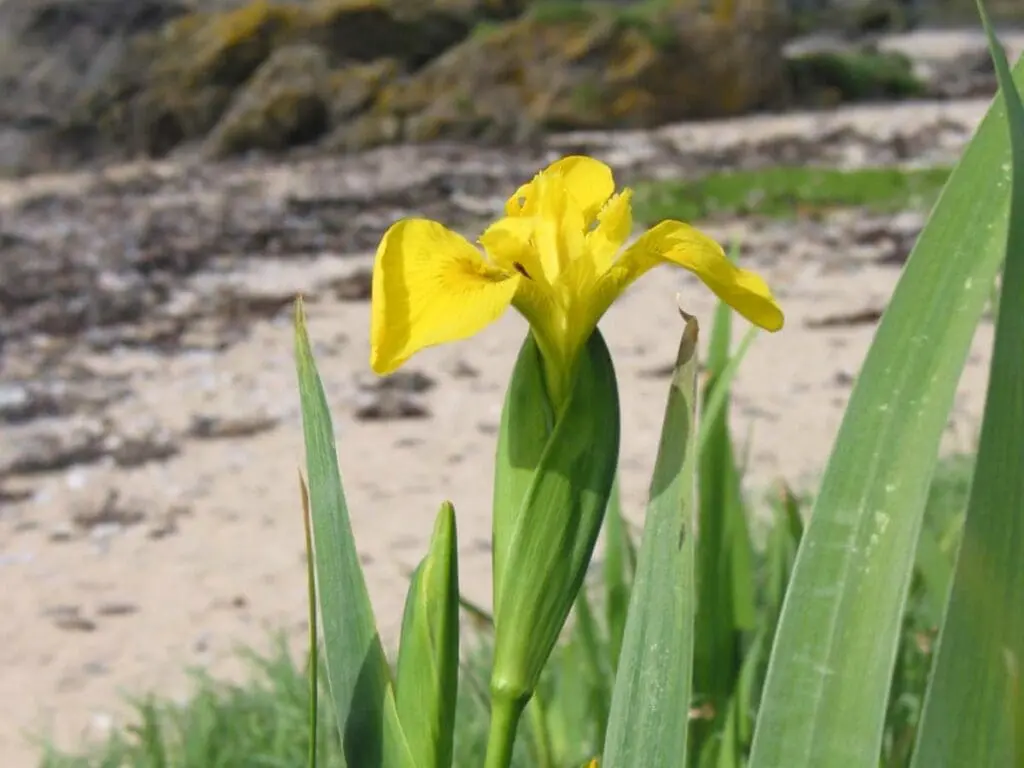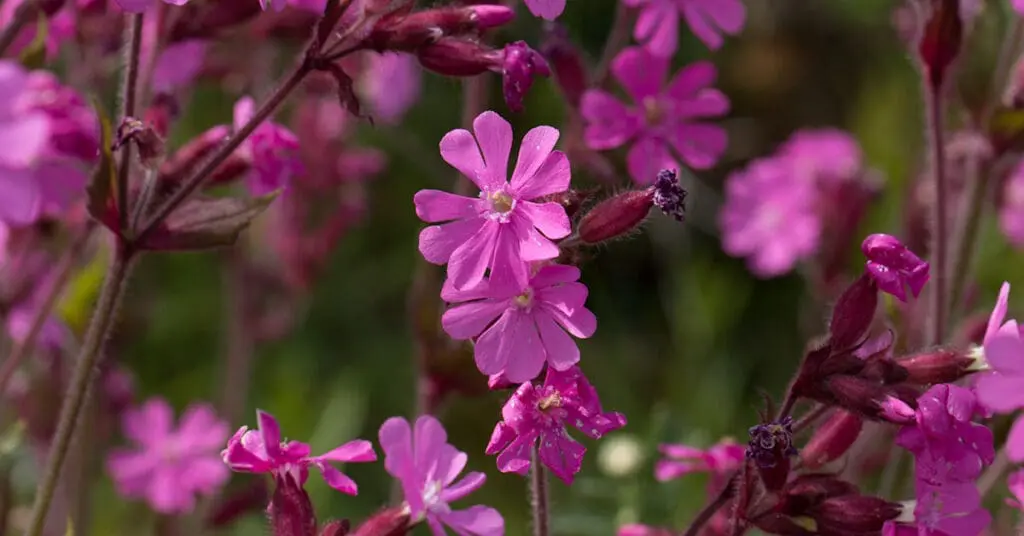- Scientific name: Allium ursinum
- Family: Lily (Liliaceae)
- Found in: Woodland
Wild garlic (or ramsons) starts growing underground in late winter and its striking white flowers appear between May and June, contrasted against lush green foliage. Flowers are hermaphrodite (they have both male and female organs) and are pollinated by bees and other insects.
Seeds ripen in July, when the plant dies back completely, allowing other plants to grow in the same place. Wild garlic grows better in loamy (medium) and sandy (light) soils. The plant can grow in many conditions but prefers moist and slightly acid soils. In your garden, wild garlic can inhibit the growth of legumes, like peas, but grows well with most other plants, such as carrots, chamomile and roses.
This species is characteristic of old established woodlands. It is often found in dappled shade conditions in damp meadows, along stream sides and in shady hedges. Wild garlic can be a very invasive plant when the growing conditions are right and they tend to form a dense carpet of growth in the spring.
Ramsons have similar, but weaker, health benefits to cultivated garlic. All parts of the plant can be used, but the most effective part is the bulb. It can help to reduce blood pressure and cholesterol, as well as easing stomach pain and as a digestive tonic. It can also be used to treat diarrhoea, wind, indigestion and colic. It is a mild irritant and acts as a stimulant to circulation when applied externally to rheumatic and arthritic joints. This wild herb is also beneficial in the treatment of asthma, bronchitis and emphysema. Despite the fact that these health benefits are quite widely known, we do not recommend you try any of them unless directed by a doctor or qualified herbalist.
Apart from its medicinal uses, it’s a very tasty plant. It can be eaten in its raw or cooked state. The leaves and flowers can be a very tasty addition to salads. The flowers have a slightly stronger flavour towards the end of their life as the seeds start to ripen. The bulbs are smaller, milder and more difficult to harvest than cultivated garlic. Unlike shop bought garlic they do not form into easily discernible cloves but like their culinary cousin they can be stored for long periods.
The juice of the leaves can be used as a moth repellent and as a general household disinfectant. The whole plant is said to have an effect on repelling insects and, where they occur, moles.
Propagation
From seed
Sow seeds as soon as they ripe, either in situ or in a cold frame. Usually wild garlic sets seed profusely and germinates well. Plants should be large enough for planting out by the third year.
By division
You should divide the bulbs in the last weeks of summer after the plant dies down. Plant the bulbs fairly deeply into their permanent positions, where assuming conditions are right, they should flourish. Once this plant is growing in your garden you should have no need to propagate it further!

